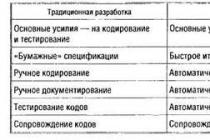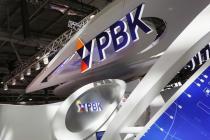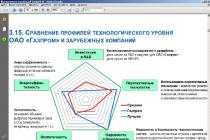Polyethylene is a synthetic thermoplastic non-polar polymer belonging to the class of polyolefins. Ethylene polymerization product. White solid. It is produced in the form of low-pressure polyethylene (high-density polyethylene), obtained by the suspension method of polymerization of ethylene at low pressure on complex organometallic catalysts in suspension or by the gas-phase method of polymerization of ethylene in the gas phase on complex organometallic catalysts on a carrier, and high-pressure polyethylene (low density polyethylene) , obtained at high pressure by polymerization of ethylene in tubular reactors or reactors with a stirrer using radical type initiators. In addition, there are several subclasses of polyethylene that differ from traditional ones in higher performance characteristics. In particular, ultra high molecular weight polyethylene, linear low density polyethylene, polyethylene obtained on metallocene catalysts, bimodal polyethylene.
As a rule, polyethylene is produced in the form of stabilized granules with a diameter of 2-5 millimeters in colored and uncolored form. But the industrial production of polyethylene in powder form is also possible.
The usual designation for polyethylene in the Russian market is PE, but other designations can also be found: PE (polyethylene), LDPE or LDPE or LDPE or PEBD or PELD (low density polyethylene, high pressure polyethylene), HDPE or HDPE or HDPE or PEHD (high density polyethylene). low density polyethylene), MDPE or MDPE or PEMD (medium density polyethylene), ULDPE (ultra low density polyethylene), VLDPE (very low density polyethylene), LLDPE or LLDPE or PELLD (linear low density polyethylene), LMDPE (linear medium density polyethylene density), HMWPE or PEHMW or VHMWPE (high molecular weight polyethylene). HMWHDPE (high molecular weight polyethylene), PEUHMW or UHMWPE (ultra high molecular weight polyethylene), UHMWHDPE (ultra high molecular weight polyethylene), PEX or XLPE (crosslinked polyethylene), PEC or CPE (chlorinated polyethylene), EPE (expandable polyethylene), mLLDPE or MPE ( metallocene linear low density polyethylene).
The symbol of domestic suspension low-pressure polyethylene consists of the name of the material "polyethylene", eight digits characterizing a particular brand, and the designation of the standard in accordance with which the polyethylene is made.
The first digit 2 indicates that the ethylene polymerization process proceeds on complex organometallic catalysts at low pressure. The next two digits indicate the serial number of the base brand. The fourth digit indicates the degree of homogenization of the polyethylene. Low pressure polyethylene is subjected to averaging by cold mixing, which is indicated by the number 0. The fifth digit conditionally determines the polyethylene density group:
6 - 0.931-0.939 g / cm 3;
7 - 0.940-0.947 g / cm 3;
8 - 0.948-0.959 g / cm 3;
9 - 0.960-0.970 g / cm 3.
When determining the density group, the average value of the density of a given brand is taken. The following numbers, written through a dash, indicate ten times the average value of the melt flow index of the given grade.
An example of the designation of the base brand of suspension low-pressure polyethylene of the serial number of brand 10, averaged by cold mixing, with a density of 0.948-0.959 g / cm 3 and an average melt flow rate of 7.5 g / 10 min:
Polyethylene 21008-075 GOST 16338-85.
The designation of a low-pressure polyethylene composition that does not contain a dye additive consists of the name of the material "polyethylene", the first three digits of the base brand designation, the number of the additive formulation written through a dash, and the designation of the standard according to which the polyethylene is manufactured.
An example of the designation of the composition of suspension low-pressure polyethylene of the base brand 21008-075 with additives in accordance with the recipe 04:
Polyethylene 210-04 GOST 16338-85.
An example of the designation of the composition of gas-phase low-pressure polyethylene brand 271 with additives in accordance with the recipe 70:
Polyethylene 271-70 GOST 16338-85.
The designation of the composition of low-pressure polyethylene with the addition of a dye consists of the name of the material "polyethylene", the first three digits of the base brand, written with a dash of the number of the additive formulation (if any), written with a comma of the color name, a three-digit number indicating the coloring formulation, and the designation of the standard , according to which the polyethylene is made.
An example of the designation of the base grade of low-density polyethylene 21008-075 and composition 210-04 based on it, painted red according to recipe 101:
Polyethylene 210, red rec. 101 GOST 16338-85,
Polyethylene 210-04, red rec. 101 GOST 16338-85.
Basic brands of suspension low-pressure polyethylene: 20108-001; 20208-002; 20308-005; 20408-007; 20508-007; 20608-012; 20708-016; 20808-024; 20908-040; 21008-075.
Basic grades of low-pressure gas-phase polyethylene: 271-70; 271-82; 271-83; 273-71; 273-73; 273-79; 273-80; 273-81; 276-73; 276-75; 276-83; 276-84; 276-85; 276-95; 277-73; 277-75; 277-83; 277-84; 277-85; 277-95.
The conventional designation of domestic high-pressure polyethylene consists of the name "polyethylene", eight digits, grade and designation of the standard in accordance with which the polyethylene is made.
The first digit - 1 indicates that the ethylene polymerization process proceeds at high pressure in tubular reactors or reactors with a stirrer using radical type initiators.
The next two digits indicate the serial number of the base brand. The fourth digit indicates the degree of polyethylene homogenization:
0 - without homogenization in the melt;
1 - homogenized in the melt.
The fifth digit conventionally determines the polyethylene density group, g/cm 3 .
1 – 0,900-0,909
2 – 0,910-0,916
3 – 0,917-0,921
4 – 0,922-0,926
5 – 0,927-0,930
6 – 0,931-0,939
When determining the density group, its nominal value for a given brand is taken.
The following numbers, written with a dash, indicate ten times the value of the melt flow index.
An example of the designation of high-pressure polyethylene of the serial number brand 15, without homogenization in the melt, with a density of 0.917-0.921 g / cm 3 and a nominal value of the melt flow rate of 7 g / 10 min of the 1st grade:
Polyethylene 11503-070, grade 1, GOST 16337-77
The designation of high-pressure polyethylene compositions consists of the name of the material "polyethylene", the first three digits of the base brand designation, the number of the additive formulation written through a dash, the color and dye formulation, the grade and designation of the standard in accordance with which the polyethylene is made.
An example of the designation of a high-pressure polyethylene composition of the base brand 10204-003 with additives in accordance with the recipe 03, 1st grade:
Polyethylene 102-03, grade 1, GOST 16337-77
In the case of dyed high-density polyethylene compositions, a color and a three-digit number indicating the coloring formulation are added to the designation.
An example of the designation of a high-density polyethylene composition of the base grade 10204-003, painted pink according to the recipe 104, 1st grade:
Polyethylene 102, pink 104, grade 1, GOST 16337-77
In the designation of high-pressure polyethylene intended for the manufacture of films for various purposes, products in contact with food, drinking water, cosmetics and drugs, toys, as well as polyethylene subject to long-term storage, the corresponding purpose is additionally indicated.
Basic grades of high pressure polyethylene obtained in reactors with a stirrer: 10204-003; 10604-007; 10703-020; 10803-020; 11304-040; 11503-070; 12003-200; 12103-200.
Basic grades of high pressure polyethylene obtained in tubular reactors: 15003-002; 15303-003; 15503-004; 16305-005; 17603-006; 17504-006; 16005-008; 17703-010; 16603-011; 17803-015; 15803-020; 16204-020; 16405-020; 18003-030; 18103-035; 16904-040; 18203-055; 16803-070; 18303-120; 17403-200; 18404-200.
In the cable industry, compositions based on high-pressure (low-density) and low-pressure (high-density) polyethylene with stabilizers and other additives are used for applying insulation, sheaths and protective covers of wires and cables by extrusion.
The grades of polyethylene compositions for the cable industry are established on the basis of base grades of high-density polyethylene 10204-003, 15303-003, 10703-020, 18003-030, 17803-015 and additive formulations 01, 02, 04, 09, 10, 93-97, 99, 100, grades 10703-020 and formulations 61 and LDPE (slurry method) 20408-007, 20608-012, 20708-016, 20808-024 and additive formulations 07, 11, 12, 19, 57 LDPE ( gas-phase method) based on grade 271-powder and additive formulations 70, 82, 83, grade 273-powder and additive formulations 71, 81.
The designation of grades of polyethylene compositions for the cable industry consists of the name of the material "polyethylene", the first three digits of the designation of the base grade of polyethylene, the number of the additive formulation written through a dash, and the letter "K", indicating the use of polyethylene compositions in the cable industry, and the designation of the standard, in according to which polyethylene is made for the cable industry.
An example of a symbol for a composition for the cable industry based on high-density polyethylene of the base grade 10204-003 with additives in accordance with recipe 09:
Polyethylene 102-09K GOST 16336-77
An example of a symbol for a composition for the cable industry based on low-density polyethylene of the base grade 20408-007 with additives in accordance with recipe 07:
Polyethylene 204-07K GOST 16336-77
When ordering polyethylene, the grade is indicated after the brand designation. For polyethylene intended for the manufacture of electrical products and products in contact with food, drinking water, cosmetics and drugs, toys that come into contact and not in contact with the oral cavity, as well as for polyethylene subject to long-term storage, the corresponding purpose is additionally indicated.
But there are other brands of polyethylene on the market, since most manufacturers work in accordance with their own specifications, reflecting the development of the polymer materials industry, which the standardization system does not always keep up with.
Structure: Polyethylene is a polymerization product of ethylene, the chemical formula of which is C 2 H 4 . During polymerization, the ethylene double bond is broken and a polymer chain is formed, the elementary link of which consists of two carbon atoms and four hydrogen atoms:
N N
– S – S –
H H During polymerization, branching of the polymer chain can occur, when a short polymer group is attached to the growing main chain from the side.
The branching of the polymer chain prevents the close packing of macromolecules and leads to the formation of a loose amorphous-crystalline structure of the material and, as a result, to a decrease in the density of the polymer and a decrease in the softening temperature. The different degree of branching of the polymer chain of high and low pressure polyethylene determines the difference in the properties of these materials.
Thus, high-pressure polyethylene has a chain branching of 15-25 branches per 1000 carbon atoms of the chain, while low-pressure polyethylene has 3-6 branches per 1000 carbon atoms of the chain. Accordingly, the density, melting and softening points, and the degree of crystallinity of LDPE, which is also called "branched chain polyethylene", are lower than those of HDPE, the polymerization method of which causes little branching.
Properties: Polyethylene is a plastic material with good dielectric properties. Impact-resistant, non-breakable, with little absorption capacity. Physiologically neutral, odorless. It has low vapor and gas permeability. Polyethylene does not react with alkalis of any concentration, with solutions of any salts, carboxylic, concentrated hydrochloric and hydrofluoric acids. Resistant to alcohol, gasoline, water, vegetable juices, oil. It is destroyed by 50% nitric acid, as well as liquid and gaseous chlorine and fluorine. It is insoluble in organic solvents and swells to a limited extent in them. Polyethylene is stable when heated in vacuum and inert gas atmosphere. But in air it is destructed when heated already at 80 °C. Resistant to low temperatures down to -70 °C. Under the action of solar radiation, especially ultraviolet rays, it undergoes photodegradation (soot, derivatives of benzophenones are used as light stabilizers). It is practically harmless, no substances hazardous to human health are released from it into the environment.
Polyethylene is easily recycled by all major plastics processing methods. Easily modified. Through chlorination, sulfonation, bromination, fluorination, it can be given rubber-like properties, improve heat resistance, chemical resistance. Copolymerization with other olefins, polar monomers to increase crack resistance, elasticity, transparency, adhesion characteristics. By blending with other polymers or copolymers, improve toughness and other physical properties.
The chemical, physical and operational properties of polyethylene depend on the density and molecular weight of the polymer, and therefore are different for different types of polyethylene. So, for example, LDPE (branched chain polyethylene) is softer than HDPE, therefore films made from low-density polyethylene are more rigid and dense than high-density polyethylene. Their tensile and compressive strength is higher, tear and impact resistance is lower, and permeability is 5-6 times lower than that of HDPE films.
Ultra-high molecular weight polyethylene with a molecular weight of more than 1,000,000 has increased strength properties. The temperature range of its operation is from -260 to +120 °С. It has a low coefficient of friction, high wear resistance, crack resistance, chemical resistance in the most aggressive environments.
HDPE properties in accordance with GOST 16338-85.
1. Density - 0.931-0.970 g / cm 3.
2. Melting point - 125-132 ° C.
3. Vicat softening temperature in air - 120-125 °C.
4. Bulk density of granules - 0.5-0.6 g / cm 3.
5. Bulk density of the powder - 0.20-0.25 g / cm 3.
6. Breaking stress in bending -19.0-35.0 MPa
7. Shear strength - 19.0-35.0 MPa.
8. The hardness of ball indentation under a given load is 48.0-54.0 MPa.
9. Specific surface electrical resistance - 10 14 Ohm.
10. Specific volume electrical resistance - 10 16 -10 17 Ohm cm.
11. Water absorption for 30 days - 0.03-0.04%.
12. Tangent of the dielectric loss angle at a frequency of 10 10 Hz - 0.0002-0.0005.
13. Dielectric constant at a frequency of 10 10 Hz - 2.32-2.36.
14. Specific heat capacity at 20-25 °C - 1680-1880 J/kg °C.
15. Thermal conductivity - (41.8-44) 10 -2 V / (m ° C).
16. Linear coefficient of thermal expansion - (1.7-2.0) 10 -4 1/°C.
Properties of LDPE in accordance with GOST 16337-77.
1. Density - 0.900-0.939 g / cm 3.
2. Melting point - 103-110 ° C.
3. Bulk density - 0.5-0.6 g / cm 3.
4. Hardness in ball indentation under a given load - (1.66-2.25) 10 5 Pa; 1.7-2.3 kgf / cm 2.
5. Shrinkage during casting - 1.0-3.5%.
6. Water absorption for 30 days - 0.020%.
7. Breaking stress during bending - (117.6-196.07) 10 5 Pa; 120-200 kgf / cm 2.
8. Tensile strength - (137.2-166.6) 10 5 Pa; 140-170 kgf / cm 2.
9. Specific volume electrical resistance - 10 16 -10 17 Ohm cm.
10. Specific surface electrical resistance - 10 15 Ohm.
11. Brittleness temperature for polyethylene with melt flow index in g/10 min
0.2-0.3 - not higher than minus 120 ° С,
0.6-1.0 - not higher than minus 110 ° С,
1.5-2.2 - not higher than minus 100 ° С,
3.5 - not higher than minus 80 ° С,
5.5 - not higher than minus 70 ° С,
7-8 - not higher than minus 60 ° С,
12 - not higher than minus 55 ° С,
20 - not higher than minus 45 °С.
12. Modulus of elasticity (secant) for polyethylene with a density in g / cm 2
0.917-0.921 - (882.3-1274.5) 10 5 Pa; 900-1300 kgf / cm 2,
0.922-0.926 - (1372-1764.7) 10 5 Pa; 1400-1800 kgf / cm 2,
0.928 - 2107.8 10 5 Pa; 2150 kgf / cm 2.
13. Tangent of the dielectric loss angle at a frequency of 10 10 0 Hz - 0.0002-0.0005.
14. Dielectric constant at a frequency of 10 10 Hz - 2.25-2.31.
A comparative analysis of the characteristics of HDPE and LDPE shows that HDPE, due to its higher density, has higher strength characteristics: heat resistance, rigidity and hardness, is more resistant to solvents than LDPE, but is less frost-resistant. Somewhat worse than HDPE (due to catalyst residues), high-frequency electrical characteristics, but this does not limit the use of HDPE as an electrical insulating material. In addition, the presence of catalyst residues does not allow the use of HDPE in contact with food products (catalyst cleaning is required). Due to the denser packing of macromolecules, the permeability of HDPE is lower than that of LDPE by about 5-6 times. In terms of chemical resistance, HDPE is also superior to LDPE (especially in terms of resistance to oils and fats). But LDPE films are more permeable to gases, and therefore unsuitable for packaging products that are sensitive to oxidation.
Receipt: In industry, polyethylene is obtained by polymerization of ethylene at high (LDPE, LDPE) and low pressure (HDPE, HDPE).
High pressure polyethylene (low density) is obtained by polymerizing ethylene at high pressure in tubular or stirred reactors using radical type initiators.
High-pressure polyethylene is produced without additives - basic grades, or in the form of compositions based on them with stabilizers and others and additives in colored and uncolored form.
Low-pressure polyethylene (high density) is produced by a suspension method of ethylene polymerization at low pressure on complex organometallic catalysts in suspension or by a gas-phase method of polymerization of ethylene in a gas phase on complex organometallic catalysts on a carrier or by polymerization of ethylene in solution in the presence of a titanium-magnesium catalyst or CrO 3 on silica gel.
Polyethylene obtained by the suspension method (suspension polyethylene) is produced without additives (base grades) and in the form of compositions based on them with stabilizers, dyes and other additives.
Polyethylene obtained by the gas-phase method (gas-phase polyethylene) is produced in the form of compositions with stabilizers.
The polymerization process at high pressure proceeds according to the radical mechanism, the initiators are oxygen, peroxides, for example, lauryl or benzoyl, or mixtures thereof.
In the production of LDPE in a tubular reactor, ethylene mixed with an initiator, compressed by a compressor to 25 MPa and heated to 70 ° C, first enters the first zone of the reactor, where it is heated to 180 ° C, and then into the second, where it polymerizes at 190-300 ° C and pressure 130-250 MPa. The average residence time of ethylene in the reactor is 70-100 s, the degree of conversion is 18-20%, depending on the amount and type of initiator. Unreacted ethylene is removed from polyethylene, the melt is cooled to 180-190 °C and granulated. Granules cooled with water to 60-70 °C are dried with warm air and packed in bags.
The principle scheme for the production of LDPE in an autoclave with a stirrer differs from production in a tubular reactor in that the initiator in paraffin oil is fed directly into the reactor by a special high-pressure pump. The process is carried out at 250 °C and a pressure of 150 MPa. The average residence time of ethylene in the reactor is 30 s. The degree of conversion is about 20%.
Commodity high-pressure polyethylene is produced dyed and unpainted, in granules with a diameter of 2-5 mm.
The polymerization process at low pressure proceeds according to the coordination-ionic mechanism.
Obtaining HDPE in suspension includes the following stages: preparation of a catalyst suspension and an activator solution in the form of a combination of triethylaluminum and titanium derivatives; polymerization of ethylene at a temperature of 70-95 °C and a pressure of 1.5-3.3 MPa; solvent removal, drying and granulation of polyethylene. The degree of conversion of ethylene is 98%. The concentration of polyethylene in the suspension is 45%. The unit capacity of reactors with an improved heat removal system is up to 60-75 thousand tons/year.
The technological scheme for obtaining HDPE in solution is carried out, as a rule, in hexane at 160-250 ° C and a pressure of 3.4-5.3 MPa in the presence of a titanium-magnesium catalyst or CrO 3 on silica gel. The contact time with the catalyst is 10-15 min. Polyethylene is isolated from the solution by removing the solvent successively in the evaporator, separator and vacuum chamber of the granulator. Polyethylene granules are steamed with water vapor at a temperature exceeding the melting point of polyethylene, so that low molecular weight fractions of polyethylene pass into the water and catalyst residues are neutralized. The advantages of polymerization in solution over polymerization in suspension are that the stages of squeezing and drying the polymer are eliminated, it becomes possible to utilize the heat of polymerization to evaporate the solvent, and the regulation of the molecular weight of polyethylene is facilitated.
The gas-phase polymerization of ethylene is carried out at 90–100°C and a pressure of 2 MPa with chromium-containing compounds on silica gel as a catalyst. The lower part of the reactor has a perforated grate for uniform distribution of the supplied ethylene in order to create a fluidized bed, in the upper part there is an expanded zone designed to reduce the gas velocity and trap particles of the formed polyethylene.
Commodity low-pressure polyethylene is produced dyed and unpainted, usually in granules with a diameter of 2-5 mm, less often in the form of a powder.
The use of various catalysts makes it possible to entrust varieties of polyethylene with improved performance.
So, polymerization in a solvent in the presence of Co, Mo, V oxides at 130-170 ° C and a pressure of 3.5-4 MPa produces medium-pressure polyethylene (PESD), the chain branching of which is less than 3 branches per 1000 carbon atoms, which increases its strength quality and heat resistance compared to HDPE.
Metallocene catalysts make possible controlled polymerization along the chain length, which makes it possible to obtain polyethylene with desired consumer characteristics.
If the polymerization process takes place at low pressure in the presence of organometallic compounds, then polyethylene with a high molecular weight and a strictly linear structure is obtained, which, unlike conventional HDPE, has increased strength characteristics, low friction and high wear resistance, resistance to cracking, chemical resistance in the most aggressive environments.
By chemical modification of LDPE, linear low-density polyethylene, LLDPE, is obtained, which is a light elastic crystallizing material with Vicat heat resistance up to 118 °C. More resistant to cracking, has greater impact strength and heat resistance than LDPE.
When filling LDPE with starch, a material of interest as a biodegradable material can be obtained.
The main manufacturers of low-density polyethylene for the Russian market:
Stavrolen - in particular, Stavrolen PE4FE69, Stavrolen PE4EC04S, Stavrolen PE3IM61, Stavrolen PE0VM45, Stavrolen PE3OT49, Stavrolen PE4VM42, Stavrolen, PE4VM50V, Stavrolen PE4VM41, Stavrolen PEEC05, Stavrolen PE4PP25V;
Kazanorgsintez - in particular, HDPE 277-73, HDPE 276-73, HDPE 293-285D, HDPE 273-83, HDPE PE80B-275, HDPE PE80B-285D, HDPE 273-79;
Shurtan MCC - in particular, B-Y456, B-Y460, I-0760, I-1561.
The main manufacturers of high-density polyethylene for the Russian market:
Kazanorgsintez - in particular, PVD 15813-020, PVD 15313-003, PVD 10803-020;
Tomskneftekhim - in particular, PVD 15803-020, PVD 15313-003;
Ufaorgsintez - in particular, LDPE 15803-020.
The main manufacturers of polyethylene cable grades for the Russian market:
Kazanorgsintez - in particular, PVD 153-02K, PVD 153-10K, 271-274K;
Shurtan GCC - in particular, WC-Y436.
Polyethylene pipe grades P-Y337 MDPE, P-Y342 HDPE, P-Y456 HDPE are produced by Shurtan GCC. The same company produces film polyethylene F-Y346, F-0220S, F-0120S, F0120, F0220.
Application: Polyethylene is the most widely used polymer. It leads the world in the production of polymeric materials - 31.5% of the total volume of polymers produced. The manufacturing technology of polyethylene products is relatively simple. It can be processed by all known methods. It is welded by all main methods: hot gas, filler rod, friction, contact welding.
Working with polyethylene does not require the use of highly specialized equipment, such as for PVC processing, and modern industry produces hundreds of brands of additives and dyes to give polyethylene products a wide variety of consumer qualities.
Using injection molding, a wide range of household goods, stationery, and toys are made from polyethylene. When using extrusion, polyethylene pipes are obtained (there are special grades - pipe PE63, PE80, PE100), polyethylene cables (cross-linked polyethylene is very promising), sheet polyethylene for packaging and construction, as well as a wide variety of polyethylene films for the needs of all industries. Extrusion blow molding and rotational molding of polyethylene create various kinds of containers, vessels, containers. Thermal vacuum forming - a variety of packaging materials. Various special types of polyethylene, such as cross-linked, foamed, chlorosulfonated, ultra-high molecular weight, are successfully used to create special building materials. A separate segment of the modern market is polyethylene recycling. Many companies in Russia and the world specialize in the purchase of polyethylene waste with further processing and sale or use of recycled polyethylene. As a rule, the technology of extrusion of treated waste is used for this, followed by crushing and obtaining secondary granular material suitable for the manufacture of products.
Polyethylene is most widely used for the production of films for technical and household purposes. The advantages of all types of polyethylene for packaging purposes are: low density, good chemical resistance, low water absorption, good transparency, easy processing, good weldability, water vapor impermeability, high viscosity, flexibility, extensibility and elasticity. Polyethylene films are used for the production of bags for bread, vegetables, meat, poultry, garbage bags, packaging films for securing goods. LDPE is used for the manufacture of combined films by co-extrusion with other thermoplastic polymers and for application to paper, cardboard, cellophane, aluminum foil. In all of these composite films, the LDPE layer gives the film excellent weldability, while the other layers provide strength and odor control. To obtain certain properties, polyethylene is converted with vinyl acetate. These films, with good strength, are more transparent and weld better. Due to this, when heated and adhered to other materials, they also become suitable for application on cardboard and other packaging materials. Domestic copolymer of ethylene with vinyl acetate, obtained by joint polymerization of ethylene and vinyl acetate in bulk under high pressure, is known under the trade name Sevilen, which is widely used in the production of coiled hoses for air suction from various equipment.
Polyethylene is used to produce:
films: agricultural, packaging, shrink, stretch;
pipes: gas, water, pressure, non-pressure;
containers: tanks, canisters, bottles;
building materials;
fibers;
household items;
sanitary products;
car parts and other equipment;
electrical cable insulation;
polyethylene foam;
prostheses of internal organs;
And this is far from the limit of the possibilities of using polyethylene. Moreover, new grades of this polymer with new consumer properties are constantly entering the market.
For example, ultra-high molecular weight polyethylene (UHMWPE), used for the manufacture of high-strength technical products that are resistant to impact, cracking and abrasion: gears, bushings, couplings, rollers, rollers, sprockets, as well as insulating parts of equipment operating in the high and microwave frequency range. In addition, UHMWPE is widely used in the manufacture of porous products: filters, noise suppressors, gaskets, and in endoprosthetics - when creating joints, cranial and maxillofacial prostheses.
The main produced grades of polyethylene:
Composition of high density polyethylene PE2NT26-16
Savilen composition 113-27
Savilen composition 113-31
Linear low density polyethylene F-0120
Linear low density polyethylene F-0220
Linear low density polyethylene F-Y620
Linear Low Density Polyethylene F-Y720
High pressure polyethylene (LDPE) 15303-003 GOST 16337-77 premium
High pressure polyethylene (LDPE) 15303-003 GOST 16337-77 first grade
High pressure polyethylene (LDPE) 15803-020 GOST 16337-77 premium
High pressure polyethylene (LDPE) 15803-020 GOST 16337-77 first grade
High density polyethylene B-Y250
High density polyethylene B-Y456
High density polyethylene B-Y460
High density polyethylene F-Y346
High density polyethylene I-0754
High density polyethylene I-0760
High density polyethylene I-1561
High density polyethylene O-Y446
High density polyethylene O-Y750
High density polyethylene O-Y762
High density polyethylene P-Y342
High density polyethylene P-Y456
Polyethylene high molecular weight low pressure 21606 second grade
Polyethylene high molecular weight low pressure 21606 first grade
Polyethylene for the cable industry 153-01K GOST 16336-77 of the highest grade
Polyethylene for the cable industry 153-01K GOST 16336-77 first grade
Polyethylene for the cable industry 153-02K GOST 16336-77 of the highest grade
Polyethylene for the cable industry 153-02K GOST 16336-77 first grade
Polyethylene for the cable industry 153-10K GOST 16336-77 of the highest grade
Polyethylene for the cable industry 153-10K GOST 16336-77 first grade
Polyethylene brand HFP-4612H
Polyethylene brand HMI-6582M
Polyethylene brand HXF 4810H
Polyethylene brand HXF-4607
Polyethylene brand HXF-5115
Polyethylene brand LLI-2420
Polyethylene brand MXP-3920H
Polyethylene brand SHF-2680РН
Polyethylene brand SHF-3080H
Polyethylene brand SMF 2210
Polyethylene brand SMF-1810
Polyethylene brand SMF-1810H
Polyethylene grade NHV 5115N
Polyethylene grade NHV 5210N
Low pressure polyethylene brand 271-70 K
Low pressure polyethylene brand 271-81 K
Low pressure polyethylene brand 273-79
Low pressure polyethylene brand 273-83
Low pressure polyethylene brand 276-73
Low pressure polyethylene brand 277-73
LDPE grade F 3802B
Low pressure polyethylene grade PE 3 OT 49
Low pressure polyethylene grade PE 4 BM 41
Low pressure polyethylene grade PE 4 FE 69
Low pressure polyethylene grade PE 4 EC 04S
Low pressure polyethylene grade PE 4 PP 21 V
Low pressure polyethylene grade PE 4 PP 25 V
Low pressure polyethylene grade PE 6 GP 26 B
Low density polyethylene I-0525
Low density polyethylene I-1625
LDPE WC-Y436
LDPE WC-Y736
Medium density polyethylene F-Y240
Medium density polyethylene F-Y336
Medium density polyethylene P-Y337
Medium density polyethylene R-0333 U
Medium density polyethylene R-0338 U
Sevilen 11104-030
Sevilen 11205-040
Sevilen 11306-075
Sevilen 11407-027
Sevilen 11507-070
Sevilen 11607-040
Sevilen 11708-210
Savilen 11808-340
Savilen 11908-125
Sevilen 12206-007
Sevilen 12306-020
Sevilen 12508-150
The 21st century is commonly referred to not only as the time of high technology, but also as the age of polymers. It is thanks to the production, synthesized by carrying out complex reactions, from oil and other natural resources that modern science has been able to obtain hundreds of different materials.
Due to their properties, many polymers are already almost completely ousted from some areas of industry and life familiar natural substances - natural stone and wood. The cost of producing plastics is low, and the technical characteristics of some polymers are not inferior to metal, which gave a powerful impetus to the wide distribution of these artificially obtained high-molecular compounds.
- absolute waterproofness. The polymer is not wetted by water and does not absorb it, unless various chemical reagents, mainly acids and oxidizing agents, have been applied to it;
- high chemical resistance. The material does not interact with aqueous solutions of any alkalis, acids and salts, at room temperature it is not affected by any organic solvents. When the temperature rises above +60 degrees, it dissolves easily under the action of sulfuric and nitric acids;
- has a small weight and different density. The indicators depend on the type and method of obtaining a certain type of polyethylene;
- polymer crystallization occurs in the temperature range from -60 to -296 degrees Celsius.
Despite the presence of a wide range of useful properties that polyethylene has, the material also has disadvantages. They are not global, but they are also worth knowing.
First of all, any polyethylene in the natural environment, which can significantly worsen the ecology of the planet. The second point is the inability of the polymer to withstand high temperatures (more than 100-120 degrees), which makes it impossible to use it in extreme temperature conditions.

Areas of use
Due to the wide distribution, technical characteristics and low cost of production, polyethylene used in many industries and national economy. The main areas of use can be considered the following:
- construction. Today, there are a lot of special mounting films and membranes that are widely used in the construction of facilities as vapor and waterproofing. For laying various engineering communications (mainly cold water supply lines), pipes made of cross-linked polyethylene are widely used. Special protective boxes made of polyethylene are also used as wire insulation;
- package. The most common area of application for PE. We can no longer imagine an alternative to plastic bottles, in which we regularly buy drinks, oils, household chemicals and many other products. There are a lot of polyethylene containers, for technical use and the food industry. Packing tape and stretch film are also made of polyethylene. Food bags that are sold in any supermarket are also a product of ethylene polymerization;
- Agriculture. A large selection of different films and membranes made of polyethylene makes it possible to quickly and inexpensively produce greenhouses and greenhouses, irrigation and irrigation systems with polyethylene nozzles are also widely used;
- Common consumption goods. Starting from children's toys (only food-grade PE is used) and ending with household appliances, polyethylene is widely used in our lives.
In addition, some varieties of this polymer are used in the automotive industry and medicine.
Low cost, easy and fast production process, allowed polyethylene to become widespread in many industries and households, which rightfully puts this polymer in first place in popularity.

Polyester (polyester, polyester fiber)- synthetic polyester fiber. It has a very useful property to fix the shape well when heated, which is very often used when creating folds. However, when heated above 40 degrees, dents can form, which are not easy to get rid of.
Polyester is used in various combinations to add strength and anti-static properties. The most popular blend of polyester and cotton, however, due to its softness and ability to dry quickly, polyester is added to both wool and viscose.
Polyester (PE) fibers have high elasticity, this allows you to get from them products that retain their shape well. Fabrics made of such fibers almost do not wrinkle, keep their shape well, have low shrinkage, and dry quickly, which is associated with a very low hygroscopicity.
Du Pont has developed Thermastat knitted fabric, which is made from ultra-fine hollow PE fibers. Microfibers have more volume than other fibers and are therefore soft, draped and comfortable.
PE textured yarn fabrics have satisfactory air permeability, high abrasion resistance and strength. The crease resistance is 80-90%. Their disadvantages include increased shedding of threads and increased shrinkage during wet heat treatment. The texture and various external effects are achieved due to the use of threads of various twists and structures in the warp and weft.
PE fiber is used in mixture with wool, cotton, flax and viscose fiber for the production of suit, overcoat, shirt and dress fabrics.
The addition of PE fibers imparts such valuable properties to the fabrics. as crease resistance, low shrinkage and increased abrasion resistance.
Best of all, the positive properties of PE fibers are manifested in mixtures with an investment of 45-67% polyester fiber and 55-30% cotton, viscose fiber or wool.
PE + cotton
The mixture of 67% PE fiber and 33% cotton is the most widespread. The inclusion of such an amount of PE fiber somewhat reduces the hygienic properties of fabrics compared to cotton, but retains sufficient comfort for the products. This mixture is mainly used for the production of raincoat, jacket, suit, uniform, shirt fabrics.
A mixture of 50% PE fiber and 50% cotton is used for shirts, blouses, dresses and knitwear. The embedding of PE in such an amount makes it possible to preserve the hygienic properties of the fabric, close to those of cotton, and improve consumer properties. Fabrics become low-shrink and low-crease, thanks to this, the care of products is facilitated. Products retain the stability of dimensions and shapes during operation, have a good appearance and a 2-3 times longer service life.
When using various types of final finishes (water-repellent, dirt-repellent, oil-repellent, etc.), clothing fabrics with PE fibers can be used when sewing work and special clothing (suits for workers in chemical shops, metallurgists, petrochemical and gas industries, agricultural workers, workers in general specializations, workers in the medical industry, healthcare, etc.).
PE+viscose
A large volume of household fabrics is produced from classic blends of 50-67% PE fiber and 50-33% viscose fiber. These mixtures are used in a range of shirt, dress, raincoat, dress and suit fabrics, overalls and decorative fabrics.
For mixtures with viscose fiber, polyester fiber with a linear density of 0.33 tex and a length of 60-65 mm is also used.
PE+wool
When PE fibers are added to wool in an amount of up to 30% of the total mass, the fabric in appearance, softness and carcass almost does not differ from pure wool.
For semi-woolen suit fabrics, a classic is a mixture of 55% PE fiber and 45% wool. Products made from these fabrics are characterized by shape stability, wrinkle resistance, comfort, do not require frequent ironing, due to low moisture absorption, cleaning them both in wet and dry conditions is very simple.
For blends with wool, polyester fiber with a linear density of 0.33-0.44-0.22-0.17 tex, 66, 90 mm long or towed is used. With 50% fiber added to wool, yarn strength doubles and durability more than quadruples.
PE+linen
The best results are obtained when investing in a mixture with flax 67% PE fibers. At the same time, the fabric acquires crease resistance, and abrasion resistance increases by 4 times. Such fabrics are used for the manufacture of men's suits, dresses, shirts and other assortment.
For mixtures with flax, a PE fiber with a linear density of 0.44 tex and a length of 90, 102 mm is used.
International Recycling Mark for Low Density Polyethylene
It is a waxy mass of white color (thin sheets are transparent and colorless). It is chemically and frost-resistant, an insulator, not sensitive to shock (shock absorber), softens when heated (80-120 ° C), freezes when cooled, adhesion (sticking) is extremely low. Sometimes in the popular mind it is identified with cellophane - a similar material of plant origin.
Story
The inventor of polyethylene is the German engineer Hans von Pechmann, who first accidentally obtained this product in 1899. However, this discovery was not widely spread. The second life of polyethylene began in 1933 thanks to engineers Eric Fawcett and Reginald Gibson. At first, polyethylene was used in the manufacture of telephone cable and only in the 1950s began to be used in the food industry as packaging.
Titles
High density polyethylene has a registered trademark SNOLEN (Trademark Certificate No. 380910)
Receipt
For processing it comes in the form of granules from 2 to 5 mm. Polyethylene is obtained by polymerization of ethylene:
Obtaining high-density polyethylene
High density polyethylene(LDPE), or Low density polyethylene(LDPE), is formed under the following conditions:
- temperature 200-260 °C;
- pressure 150-300 MPa;
- the presence of an initiator (oxygen or organic peroxide);
in autoclave or tubular reactors. The reaction proceeds by a radical mechanism. The polyethylene obtained by this method has a weight average molecular weight of 80,000-500,000 and a degree of crystallinity of 50-60. The liquid product is subsequently granulated. The reaction takes place in the melt.
Production of medium pressure polyethylene
Medium Density Polyethylene(PESD) is formed under the following conditions:
- temperature 100-120 °C;
- pressure 3-4 MPa;
- the presence of a catalyst (Ziegler-Natta catalysts, for example, a mixture of TiCl 4 and R 3);
the product precipitates out of solution in the form of flakes. The polyethylene obtained by this method has a weight average molecular weight of 300,000-400,000, the degree of crystallinity is 80-90%.
Obtaining low-pressure polyethylene
Low-pressure polyethylene(HDPE), or High density polyethylene(HDPE), is formed under the following conditions:
- temperature 120-150 °C;
- pressure below 0.1 - 2 MPa;
- the presence of a catalyst (Ziegler-Natta catalysts, for example, a mixture of TiCl 4 and R 3);
Polymerization proceeds in suspension according to the ion-coordination mechanism. The polyethylene obtained by this method has a weight average molecular weight of 80,000-3,000,000, the degree of crystallinity is 75-85%.
It should be borne in mind that the names "low pressure polyethylene", "medium pressure", "high density", etc. are purely rhetorical. Thus, polyethylene obtained by the 2nd and 3rd methods has the same density and molecular weight. The pressure in the polymerization process at the so-called low and medium pressures is in some cases the same.
Other ways to obtain polyethylene
There are other methods of ethylene polymerization, for example, under the influence of radioactive radiation, but they have not received industrial distribution.
Polyethylene modifications
The range of ethylene polymers can be significantly expanded by obtaining its copolymers with other monomers, as well as by obtaining compositions by compounding one type of polyethylene with another type of polyethylene, polypropylene, polyisobutylene, rubbers, etc.
On the basis of polyethylene and other polyolefins, numerous modifications can be obtained - graft copolymers with active groups that improve the adhesion of polyolefins to metals, coloring, reduce its flammability, etc.
Modifications of the so-called "cross-linked" polyethylene PE-S (PE-X) stand apart. The essence of crosslinking is that the molecules in the chain are connected not only in series, but also side bonds are formed that connect the chains to each other, due to this, the physical and, to a lesser extent, chemical properties of the products change quite strongly.
There are 4 types of cross-linked polyethylene (according to the production method): peroxide (a), silane (b), radiation (c) and nitrogen (d). PEX-b is the most widespread, as it is the fastest and cheapest to manufacture.
Molecular structure
Macromolecules of high pressure polyethylene ( n≅1000) contain side hydrocarbon chains C 1 -C 4, medium pressure polyethylene molecules are practically unbranched, it has a larger proportion of the crystalline phase, therefore this material is denser; low-density polyethylene molecules occupy an intermediate position. A large number of lateral branches explains the lower crystallinity and, accordingly, the lower density of LDPE compared to HDPE and LDPE.
| Index | LDPE | PESD | HDPE |
|---|---|---|---|
| The total number of CH 3 groups per 1000 carbon atoms: | 21,6 | 5 | 1,5 |
| The number of end groups CH 3 per 1000 carbon atoms: | 4,5 | 2 | 1,5 |
| Ethyl branches | 14,4 | 1 | 1 |
| Total number of double bonds per 1000 carbons | 0,4-0,6 | 0,4-0,7 | 1,1-1,5 |
| including: | |||
| vinyl double bonds (R-CH=CH 2),% | 17 | 43 | 87 |
| vinylidene double bonds (), % | 71 | 32 | 7 |
| trans-vinylene double bonds (R-CH=CH-R"), % | 12 | 25 | 6 |
| Degree of crystallinity, % | 50-65 | 75-85 | 80-90 |
| Density, g/cm³ | 0,91-0,93 | 0,93-0,94 | 0,94-0,96 |
Polyethylene HDPE (Hight Density PE - high density)
| Parameter | Meaning |
|---|---|
| Density, g/cm³ | 0,94-0,96 |
| in tension | 100-170 |
| in static bend | 120-170 |
| at cut | 140-170 |
| elongation at break, % | 500-600 |
| modulus of elasticity in bending, kgf/cm² | 1200-2600 |
| tensile yield strength, kgf/cm² | 90-160 |
| relative elongation at the beginning of the flow, % | 15-20 |
| Brinell hardness, kgf/mm² | 1,4-2,5 |
As the sample tensile rate increases, the tensile stress at break and elongation at break decrease, and the tensile yield strength increases.
With an increase in temperature, the breaking stress of polyethylene during tension, compression, bending and shear decreases. and elongation at break increases to a certain limit, after which it also begins to decrease
| Breaking stress, kgf/cm² | Temperature, ºС | |||
|---|---|---|---|---|
| 20 | 40 | 60 | 80 | |
| under compression | 126 | 77 | 40 | - |
| in static bend | 118 | 88 | 60 | - |
| at cut | 169 | 131 | 92 | 53 |
It should be noted that the properties of polyethylene products will significantly depend on the modes of their manufacture (speed and uniformity of cooling) and operating conditions (temperature, pressure, duration, load, etc.).
High pressure polyethylene LDPE (Low Density PE - low density)
Chemical properties
General properties
Resistant to water, does not react with alkalis of any concentration, with solutions of neutral, acidic and basic salts, organic and inorganic acids, even concentrated sulfuric acid, but decomposes under the action of 50% nitric acid at room temperature and under the influence of liquid and gaseous chlorine and fluorine.
At room temperature, it is insoluble and does not swell in any of the known solvents. At elevated temperatures (80 °C) soluble in cyclohexane and carbon tetrachloride. Under high pressure it can be dissolved in water superheated up to 180 °C.
Over time, it destructures with the formation of transverse interchain bonds, which leads to an increase in brittleness against a background of a small increase in strength. Unstabilized polyethylene in air undergoes thermal-oxidative degradation (thermal aging). Thermal aging of polyethylene proceeds by a radical mechanism, accompanied by the release of aldehydes, ketones, hydrogen peroxide, etc.
Low pressure polyethylene (HDPE), or high density polyethylene (HDPE), is used in the construction of landfills for waste processing, storage of liquid and solid substances that can pollute soil and groundwater.
Recycling
Polyethylene (except ultra-high molecular weight) is processed by all methods known for plastics, such as extrusion, blown extrusion, injection molding, pneumatic molding. Polyethylene extrusion is possible on equipment with a "universal" worm installed.
Application
A low-tonnage grade of polyethylene - the so-called "ultra-high molecular weight polyethylene", characterized by the absence of any low molecular weight additives, high linearity and molecular weight, is used for medical purposes as a replacement for cartilage tissue of the joints. Despite the fact that it compares favorably with HDPE and LDPE in its physical properties, it is rarely used due to the difficulty of its processing, since it has a low MFR and is processed only by casting.
Disposal
Recycling
Polyethylene products are recyclable and reusable.
Burning
When polyethylene is heated above 140 °C, volatile products of thermo-oxidative degradation may be released into the air, containing acetic acid, formaldehyde (has a general toxic effect), acetaldehyde (causes irritation of the mucous membranes of the upper respiratory tract, suffocation, severe cough, bronchitis, pneumonia), carbon monoxide (causes suffocation).
Evgeny Sedov
When hands grow from the right place, life is more fun :)
Content
Polyester is in the composition of almost any clothing, but not everyone knows what kind of material it is. This name hides a synthetic fabric made from polyester fibers, resembling wool in appearance, and cotton in characteristics. Women's tights, jackets, raincoats, coats, underwear and even curtains and drapes are sewn from polyester. A few years ago, no one heard of such a fabric, but now it is very popular.
Description and characteristics of polyester fabric
Polyester feels like cotton to the touch. This synthetic fiber is capable of retaining its properties when heated to 40 degrees, therefore it is recommended to wash it in water not higher than this temperature. The fabric is characterized by a "cooling" effect, resistance to direct sunlight, which makes it indispensable in sunny weather.
Polyester is made of different types: shiny or matte, depending on its further purpose. This synthetic fabric is able to perfectly imitate the texture of natural fiber, therefore it is widely used in sewing pleated skirts, trouser suits and other fashionable clothes. It has the following characteristics:
- No shrinkage, stretching.
- Doesn't wrinkle.
- Dries quickly after washing.
Fabric structure

Polyester is obtained from polyamide - a plastic made on the basis of high-molecular synthetic compounds obtained after the processing of petroleum products. As a result of certain chemical processes, polyamide is processed into polyester fibers, which are stretched to the desired strength and density. The first synthetic material was created at the end of the 19th century, and polyester began to be mass-produced only in the 50s of the last century. Due to its unique composition, it is now in great demand among consumers.
Synthetic polyester fabric is the best price / quality ratio. The composition of clothing or lining fabric, in addition to polyester, usually contains other materials: acrylic, viscose, lycra, elastane, cotton, linen or wool. For curtains and home textiles, the manufacturer adds poplin or bamboo with elastane to polyester fabric so that, in addition to wear resistance, the product acquires softness, shine, and a flowing effect.
Properties and advantages

The advantages of synthetic matter also include the possibility of any design and design. In winter things made of polyester, it is very comfortable. Due to the density, the fabric provides the body with an optimal temperature even in severe frosts. See in the video below what light and stylish jackets can be sewn with it.
Pros and cons of polyester clothing
Advantages of polyester fabric:
- durable, strong;
- fade resistant;
- easy to care for;
- hydrophobic (does not absorb moisture);
- resistant to the appearance of pellets;
- dense, heat-resistant.

Disadvantages of polyester:
- does not pass air well;
- easily electrified;
- has increased rigidity;
- the ink does not penetrate into the fiber core.
Answers to frequently asked questions
Our modern world can no longer do without synthetic fabrics. We see them everywhere, from clothes to building materials. Previously, natural fabrics prevailed in everyday life, with which everything was clear. If the owner does not cherish and cherish the thing, then the hour will not be long when it will have to be thrown into the trash, as it requires special care. Now, with the entry into the synthetic market, the owners of things have a lot of questions: is polyester fabric good, and how to care for it.
Polyester - stretch or not?

The type of polyester fabric used for tailoring has high functionality, durability and wear resistance. In terms of hygienic properties, such synthetics are second only to natural materials: wool, linen, cotton, far surpassing nylon and nylon. Polyester stretches perfectly, which allows you to sew from it not only high-quality outerwear, but also sports, office and children's things. Dresses, which contain polyester, retain their original shape for a long time.
Polyester fabric - breathes or not?
When a fabric is said to “breathe”, it means that it freely lets air through. As for synthetic polyester, its breathability depends on what fabrics it is combined with. In its pure form, synthetics are very poorly breathable, so it is not recommended to wear 100% synthetic items in hot weather. But if natural fabrics are present in the composition: cotton, linen, wool, then the thing acquires excellent breathability, and surpasses clothes in strength, which include only natural fibers.
How to remove stains from polyester fabric
Clothes containing polyester rarely cause trouble, but sometimes they get greasy stains. To remove them from polyester fabric, you will need dish soap, laundry detergent and warm water. Use this guide:
- Wet the oily area with warm water.
- Apply dishwashing detergent that works well in the fight against grease.
- Rub the product thoroughly into the grease stain.
- Leave it on for a few minutes to soak in, but don't let it dry out.
- Wash the product using washing powder.
- Repeat if necessary.
Photo: what polyester fabric looks like
In its purest form, synthetic polyester looks like pure white wool, perfectly imitating natural fibers. After adding to the composition of other fibers, the fabric takes on the appearance and properties of the added materials. Polyester is fluffy or smooth, shiny or matte, in different sizes and weaves of fibers. In the photo below, you can see how different polyester materials look.
















